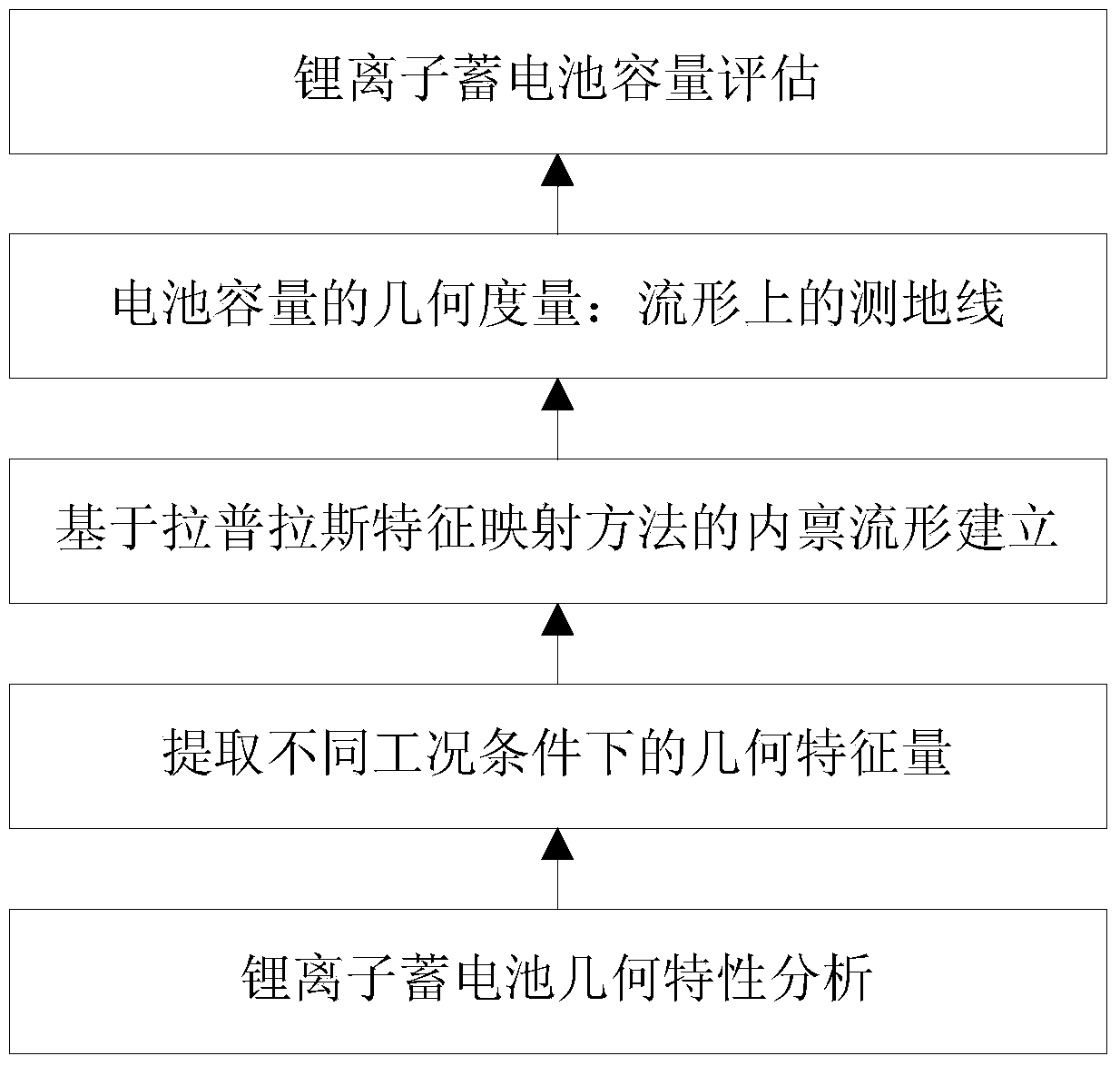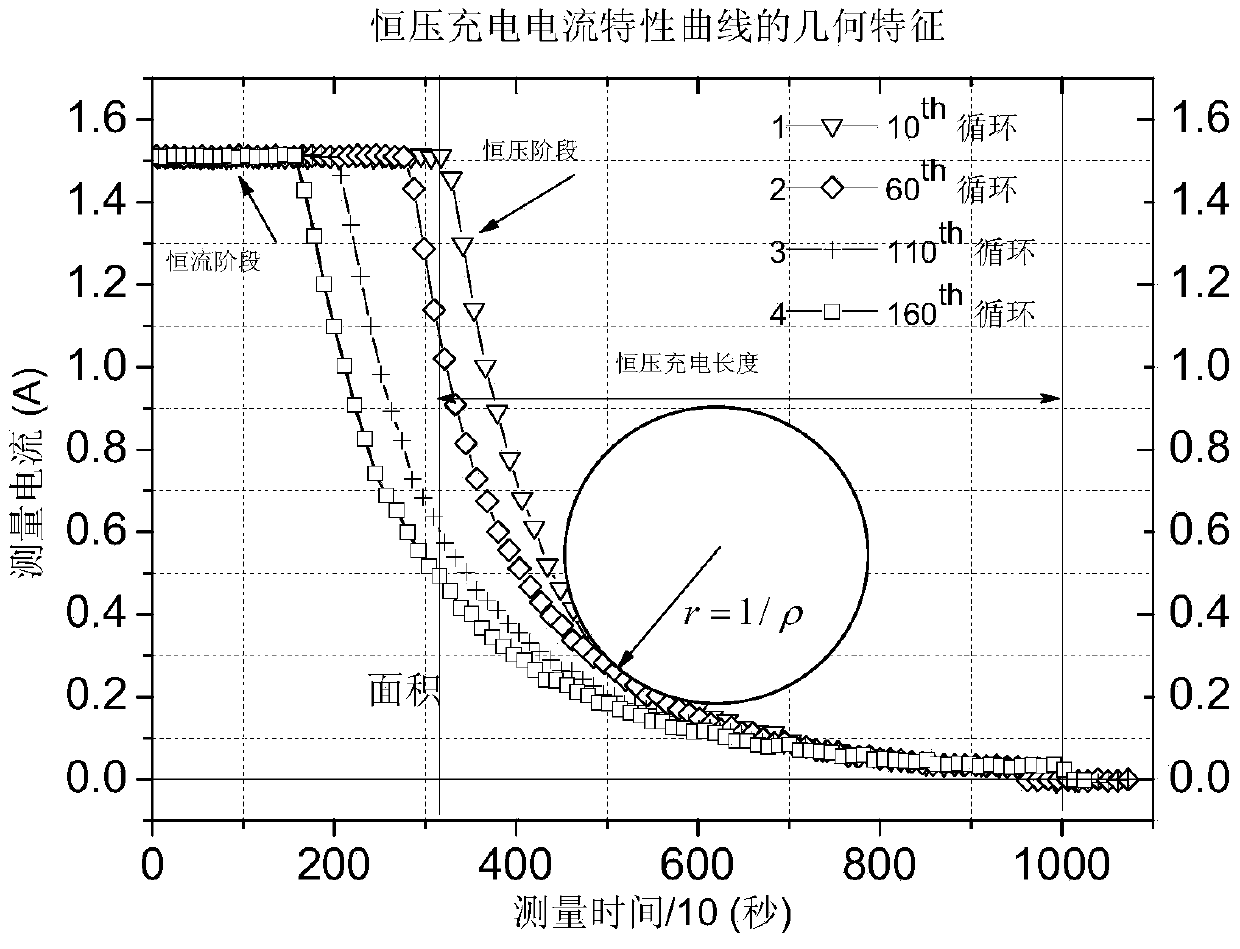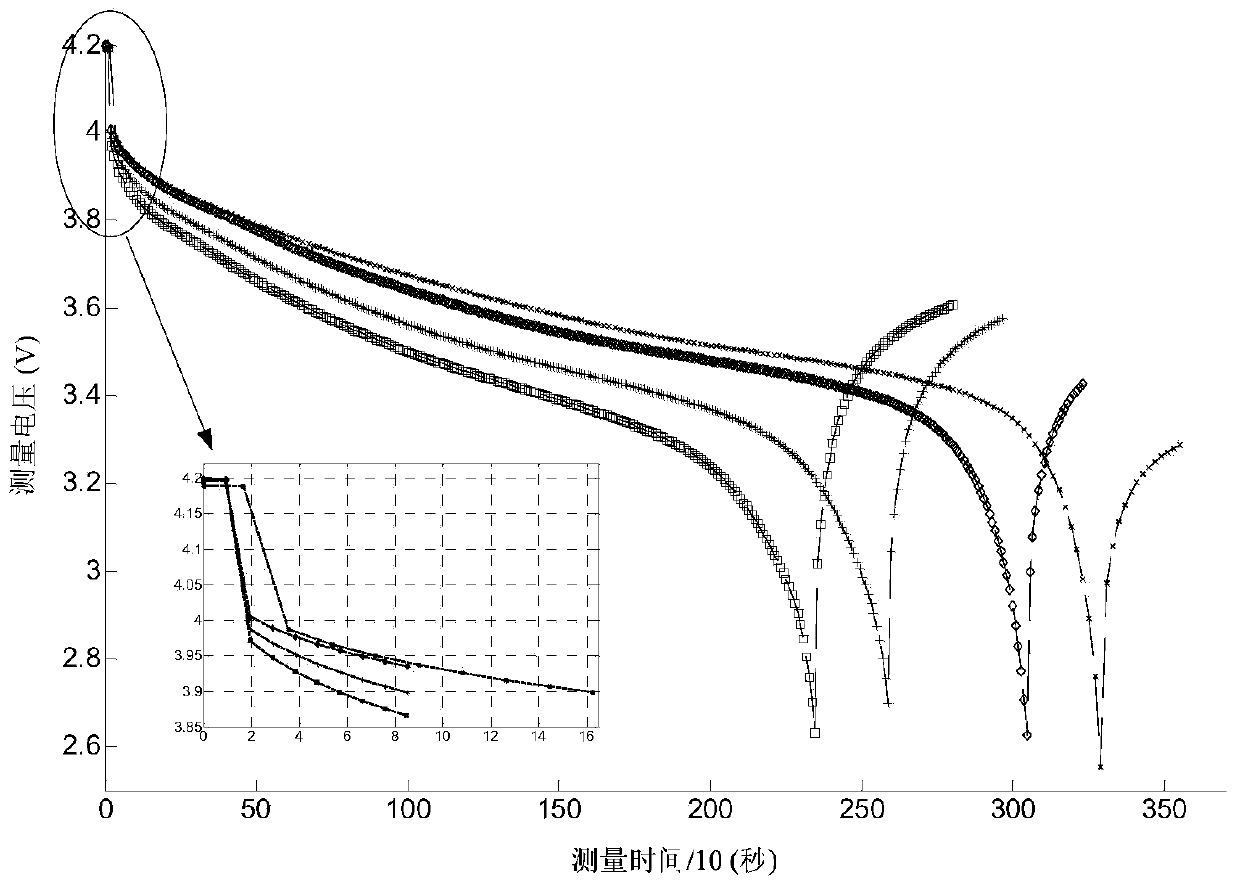Geometric method for evaluating capacity recession of lithium ion battery
A lithium-ion battery, geometric method technology, applied in the field of battery health management, can solve problems such as lack of available data, difficult SOC acquisition research areas, long resting time, etc. The effect of low consumption of time and resources
- Summary
- Abstract
- Description
- Claims
- Application Information
AI Technical Summary
Problems solved by technology
Method used
Image
Examples
Embodiment Construction
[0033] The present invention will be further described in detail below with reference to the drawings and embodiments.
[0034] The present invention is a geometric method for evaluating the capacity degradation of lithium-ion batteries, figure 1 The main process of the method is given, and the specific implementation steps are as follows:
[0035] Step 1: Extract the geometric characteristic quantities of the reference battery sample and the evaluated battery under different working conditions.
[0036] In order to accurately estimate the capacity of lithium-ion batteries, it is first necessary to determine the characteristics and parameters that can characterize the actual performance or degradation of lithium-ion batteries. Taking into account the above-mentioned different working conditions, these characteristics must be applicable to changing working conditions. The present invention extracts four geometric features from the current curve in the charging process and the voltage...
PUM
 Login to View More
Login to View More Abstract
Description
Claims
Application Information
 Login to View More
Login to View More - R&D
- Intellectual Property
- Life Sciences
- Materials
- Tech Scout
- Unparalleled Data Quality
- Higher Quality Content
- 60% Fewer Hallucinations
Browse by: Latest US Patents, China's latest patents, Technical Efficacy Thesaurus, Application Domain, Technology Topic, Popular Technical Reports.
© 2025 PatSnap. All rights reserved.Legal|Privacy policy|Modern Slavery Act Transparency Statement|Sitemap|About US| Contact US: help@patsnap.com



